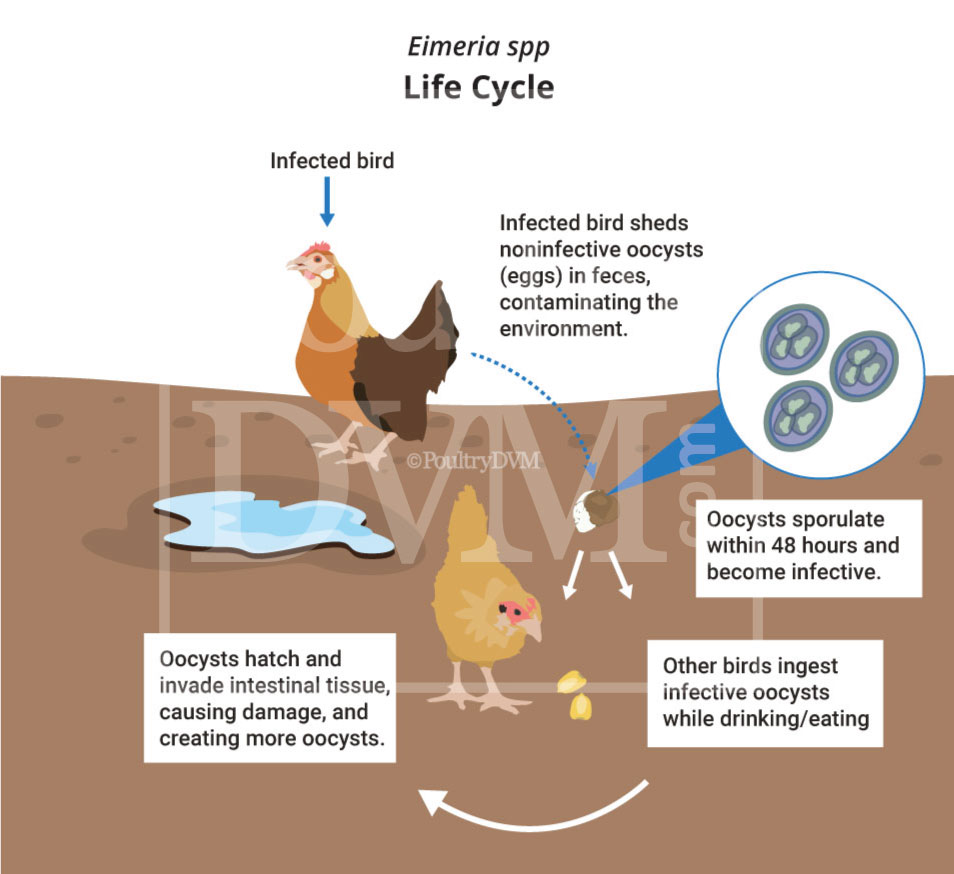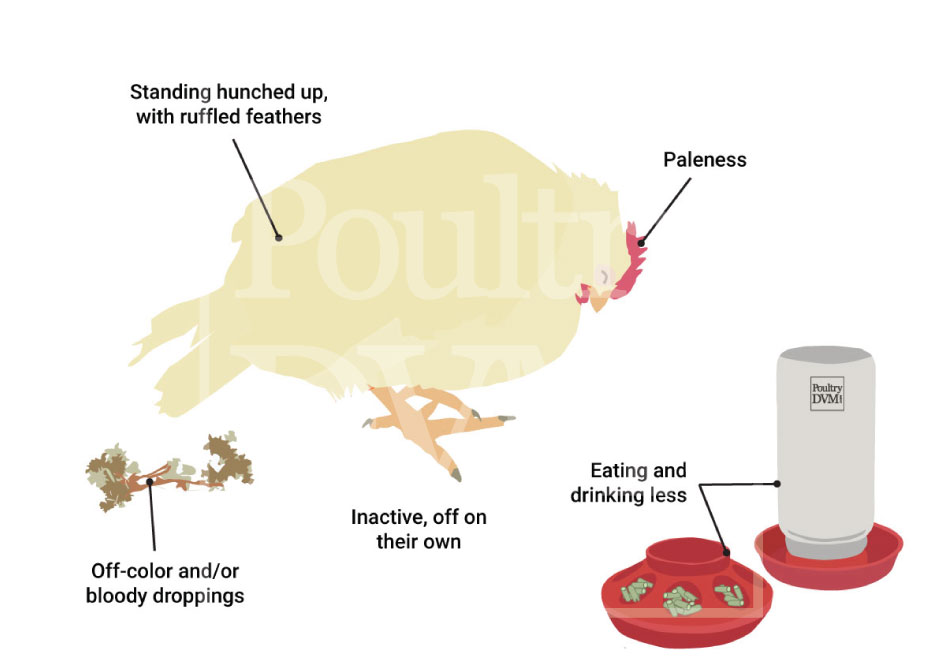Veterinary advice should be sought from your local veterinarian before applying any treatment or vaccine. Not sure who to use? Look up veterinarians who specialize in poultry using our directory listing. Find me a Vet
Other Names: Avian Coccidiosis


| Name | Summary | |
|---|---|---|
| Supportive care | Isolate the bird from the flock and place in a safe, comfortable, warm location (your own chicken "intensive care unit") with easy access to water and food. Limit stress. Call your veterinarian. | |
| Amprolium | Most be given for 5 days straight to be effective. Dosage should be in accordance with the instructions by the manufacturer. | |
| Toltrazuril | 6 mg/kg added to drinking water for 2 days. Note - When Toltrazuril is administered, it is important NOT to concurrently give supplements that contain vitamin B, for it will override the effects of the drug. | |
| Sulphonamides | 2-3 days of daily treatment and repeated in 5 days. | |
| Antioxidants | ||
| Supportive care | Keep hydrated and comfortable. Make sure bedding stays DRY to slow down oocyst sporulation. | |
| Environmental modifications | Improve sanitary practices by regularly cleaning the environment where birds are kept, minimizing persistent mud and wetness, and risk of fecal contamination in feeders and waterers. Do not overcrowd birds. Rotate runs. Treat the ground with dilute bleach or lime to reduce oocysts, followed by monthly rototilling of the soil. | |
| Antibiotics | Tylosin or amoxicillin | May be beneficial to help control secondary bacterial growth, which could otherwise lead to necrotic enteritis. |
| Bidens pilosa | Added to the diet at 100 ppm for 3 days | Qamar Memon, Fareed et al., 2020; Yang, Wen-Chin et al., 2019 |
| Curcumin | Added to the feed at 100 to 200 mg/kg daily | Yadav, Sudhir et al., 2020 |
| L-Arginine | Added to the diet at 1.24 to 1.44% | Castro, Fernanda L S et al., 2020; Yazdanabadi, Fatemeh Izadi et al., 2020 |
| Oregano essential oil | Added to the diet | Sidiropoulou, Erasmia et al., 2020 |
| Supplemental vitamins - Copper and Zinc | Added to the diet | Dos Santos, Tatiane Souza et al., 2020; Bortoluzzi, Cristiano et al., 2020; Bortoluzzi, C et al., 2019 |
| Khaya senegalensis stem bark extract | Added to the diet at 200 mg/kg | Muraina, Issa A et al., 2020 |

| Winter | Spring | Summer | Autumn |
© 2024 PoultryDVM All Rights Reserved.